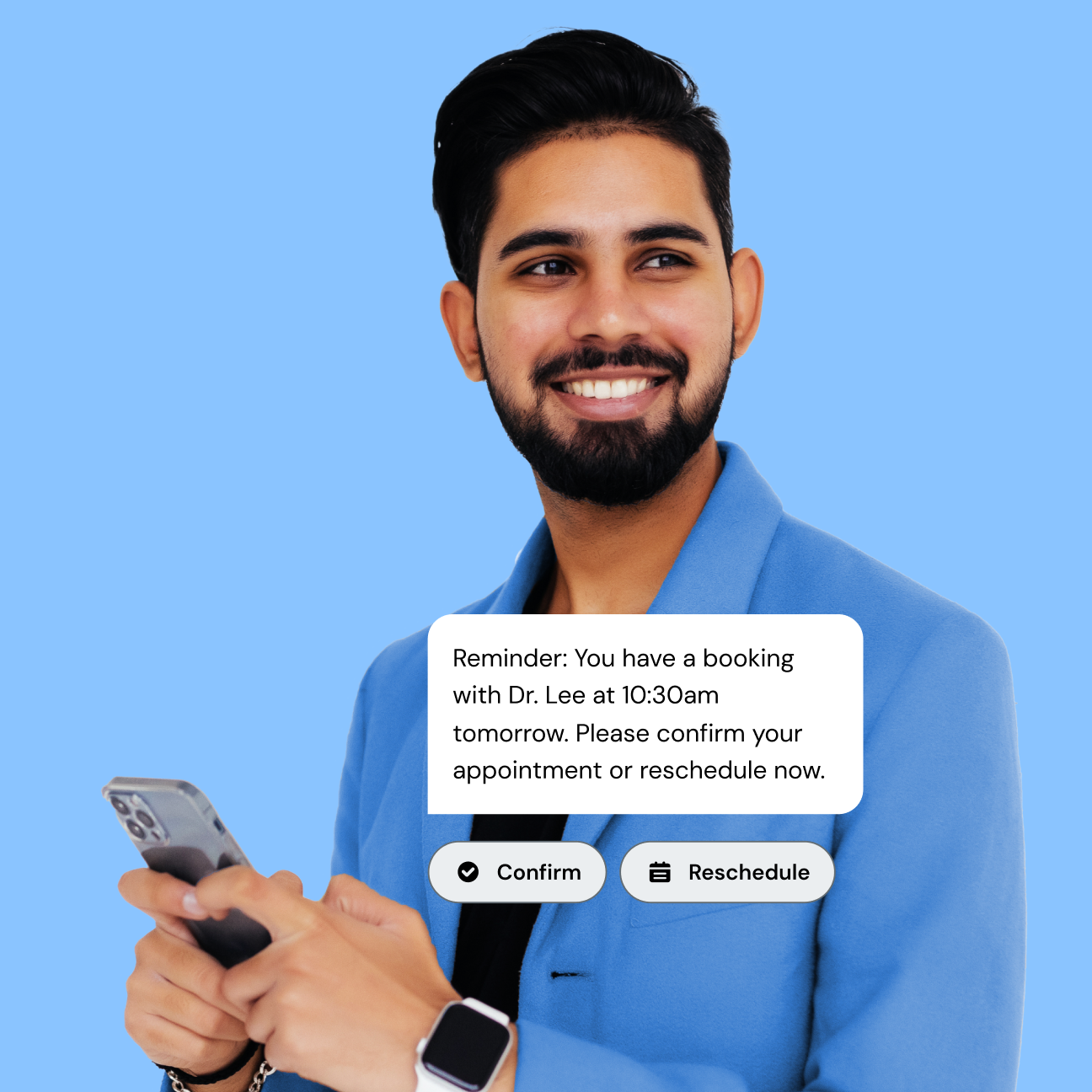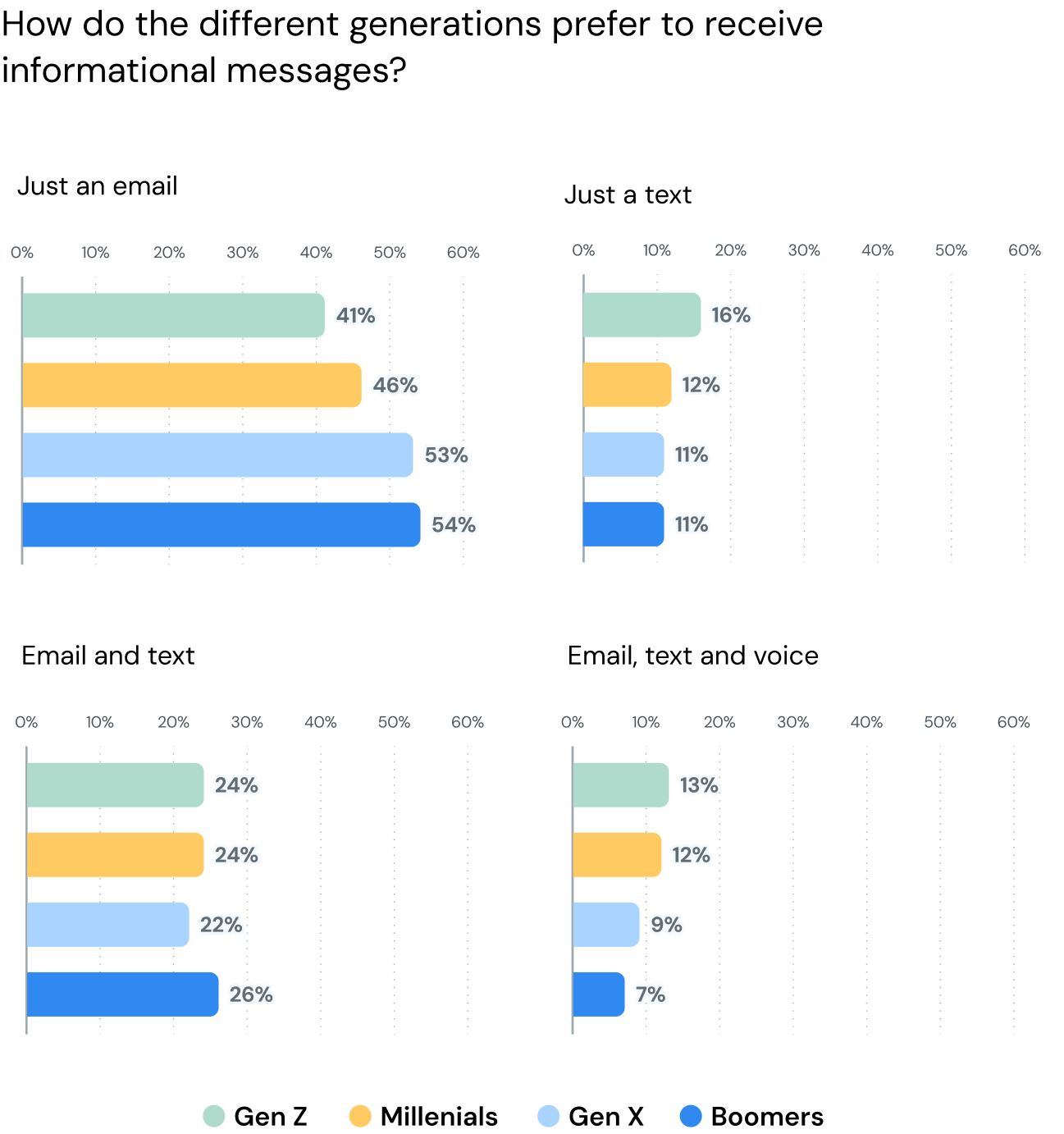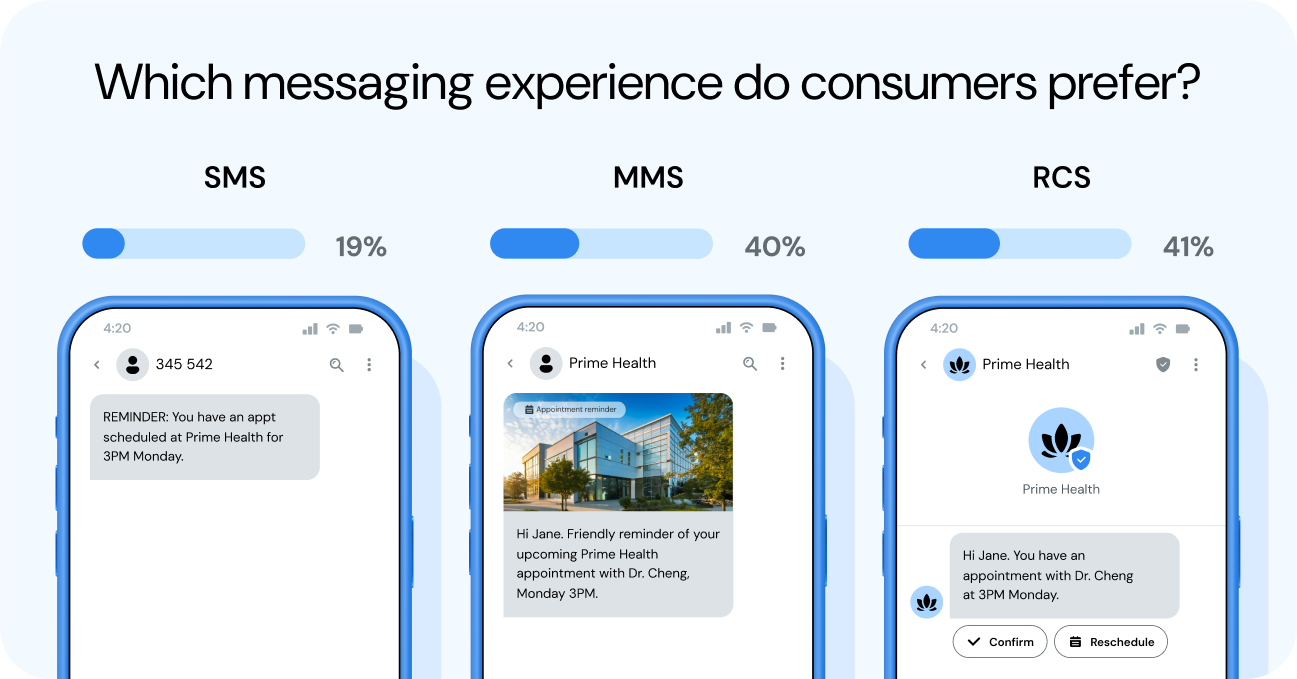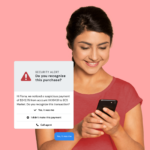Delivering information to the generations
There are some differences of opinion among age groups when it comes to receiving informational messages.
While baby boomers are the most likely to want only an email (54%), Generation Z consumers were the most likely to want the trifecta of informational communications sent via email, text, and via phone (13%).
As you’d expect, Gen Z and millennial consumers were slightly more likely than average to want customer updates delivered via text only. However, boomers were more likely than younger generations to choose the option of both email and text.
All this suggests that, no matter the age of your target market, there’s a strong case for a multichannel digital communications strategy that keeps consumers informed.







